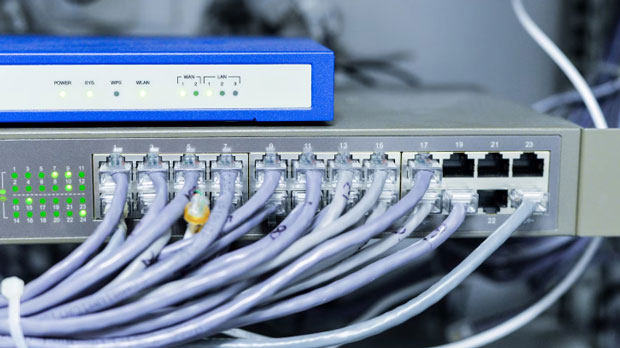When it comes to choosing the right proxy ip provider, businesses and individuals often find themselves at a crossroads, trying to select between different options based on performance, scalability, pricing, and geographical coverage. Two prominent proxy IP services stand out in the industry, each offering unique advantages and features to cater to diverse needs. While both can help mask a user’s online identity, their approaches and benefits can vary significantly. This article explores the key differences between PYPROXY and Oxylabs proxy IP services, shedding light on their unique offerings to help customers make informed decisions. Introduction: The Need for proxy ipsProxy IP services play a vital role in digital privacy, security, and anonymity. These services allow users to route their internet traffic through different servers, effectively masking their real IP addresses and protecting sensitive data. In many cases, businesses use proxy IPs for web scraping, managing multiple accounts, accessing region-restricted content, or conducting market research. The choice of a proxy IP provider is crucial for performance, cost-effectiveness, and security. Two of the most discussed proxy solutions are PYproxy and Oxylabs, each providing distinct services, features, and pricing structures.Comparing PYproxy and Oxylabs Proxy IP ServicesWhen comparing PYproxy and Oxylabs, several key factors need to be analyzed, including the type of proxies they offer, their network coverage, pricing, reliability, and security features. Both providers have established themselves in the market with distinctive offerings, making it important to assess each provider on its unique merits.1. Proxy Types OfferedProxy services come in different forms, such as residential proxies, data center proxies, and mobile proxies. These proxies vary in terms of how they route traffic and the quality of the IP addresses they provide.- PYproxy: Generally focuses on offering residential proxies, which are real IP addresses assigned to devices by Internet Service Providers (ISPs). These are ideal for users who need more authentic-looking traffic that blends seamlessly into regular internet activity. Residential proxies are particularly useful for tasks such as web scraping, geo-targeting, and accessing region-blocked content. - Oxylabs: Offers a wider variety of proxy types, including residential proxies, data center proxies, and even mobile proxies. This broader range allows users to choose the most suitable proxy based on their specific needs. Data center proxies are typically faster and more cost-effective than residential proxies but may be flagged more easily by websites due to their non-residential nature. Oxylabs' mobile proxies are especially designed for users needing mobile-specific browsing, such as ad verification or mobile app testing.2. Geographical CoverageThe geographical distribution of proxy servers is critical when choosing a provider. A wide distribution ensures users can access content from multiple locations and avoids latency issues.- PYproxy: While PYproxy has a solid global network, it focuses more on specific regions, offering proxies in select countries. This makes it a good choice for businesses looking to target specific markets. However, users seeking a broad global presence may find the geographical coverage somewhat limited compared to other providers.- Oxylabs: Oxylabs has a more extensive and diversified global network, with coverage in over 190 countries. This makes Oxylabs an excellent choice for users who need proxies from a large variety of locations. Whether for global data scraping or ad verification, Oxylabs’ extensive geographical reach provides flexibility and scalability to businesses with international needs.3. Performance and SpeedProxy speed and performance are essential for ensuring that tasks like web scraping or accessing content remain fast and efficient.- PYproxy: Known for providing stable and reliable proxies, PYproxy’s residential proxies tend to offer decent speeds for most use cases. However, as residential proxies are typically slower than data center proxies, users may notice slight delays in response times, especially when accessing high-demand websites or using proxies from regions with fewer available IPs.- Oxylabs: With a larger selection of data center proxies in addition to residential proxies, Oxylabs generally delivers faster speeds and more consistent performance. Their data center proxies provide very low latency, which is crucial for real-time applications such as price comparison, web crawling, and ad verification. For users looking for the best speed, Oxylabs’ range of proxies is a solid option.4. Pricing and AffordabilityPricing is a significant factor when choosing a proxy provider, as costs can vary considerably depending on the type of proxies and the level of service required.- PYproxy: Typically offers competitive pricing for residential proxies, with flexibility in their packages. The pricing structure tends to be more affordable for small to medium businesses that require a limited number of proxies. However, larger-scale usage or high-demand tasks might lead to higher costs, as users will need more IPs to scale their operations.- Oxylabs: Generally comes at a premium price point, especially for users opting for their high-performance data center proxies. While Oxylabs’ proxies provide superior speed and coverage, this comes at a cost. Businesses that require large volumes of proxies or have advanced needs may find Oxylabs to be a more expensive option compared to PYproxy, but the added features and performance may justify the higher pricing for certain use cases.5. Security and PrivacySecurity is paramount when using proxy services, especially for tasks such as data scraping, accessing sensitive information, or preventing tracking.- PYproxy: Focuses heavily on privacy, with a strong emphasis on anonymity. By using residential proxies that are less likely to be detected by websites, PYproxy offers enhanced privacy for users. However, due to the nature of residential proxies, users may sometimes face issues with IP blacklisting, as they rely on a network of real user IPs.- Oxylabs: Oxylabs offers strong security features, including IP rotation and advanced anti-detection measures. With their broader range of proxy types, users can choose the most secure option for their tasks. Oxylabs’ premium data center proxies come with additional security features, making them suitable for high-risk activities where anonymity and data protection are paramount.6. Customer Support and ReliabilityThe quality of customer support can significantly impact the user experience, especially when technical issues arise or help is needed for proxy management.- PYproxy: PYproxy provides responsive customer support, with a team available to assist with troubleshooting and setup. However, some users have reported longer wait times during peak periods. Despite this, PYproxy's support team is generally knowledgeable and helpful.- Oxylabs: Oxylabs offers 24/7 customer support with dedicated account managers for enterprise clients. This high level of support ensures that businesses have quick access to assistance whenever needed. Users also benefit from Oxylabs' comprehensive knowledge base and documentation.Conclusion: Making the Right Choice for Your Proxy NeedsBoth PYproxy and Oxylabs offer valuable proxy solutions, but the best choice depends on your specific needs. PYproxy is an excellent option for users looking for affordable residential proxies with a focus on privacy and anonymity. On the other hand, Oxylabs provides a more comprehensive and diverse range of proxies, offering superior performance, global coverage, and faster speeds, albeit at a higher price. Ultimately, businesses must evaluate their requirements in terms of scale, budget, and performance to select the most appropriate proxy provider for their goals.
Apr 02, 2025
![arrow]()




























































